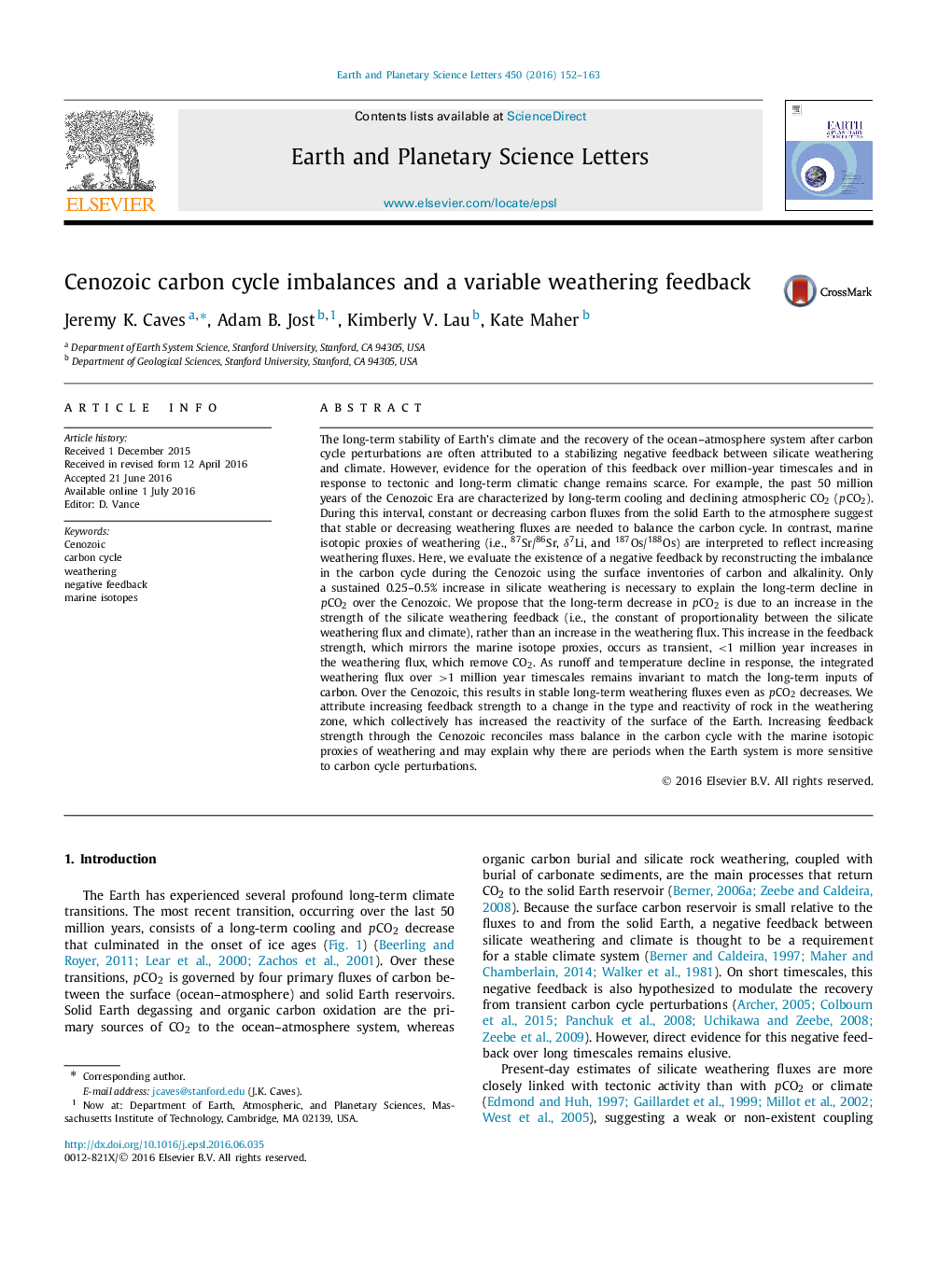| کد مقاله | کد نشریه | سال انتشار | مقاله انگلیسی | نسخه تمام متن |
|---|---|---|---|---|
| 6427296 | 1634706 | 2016 | 12 صفحه PDF | دانلود رایگان |

- We calculate carbon and alkalinity in the ocean over the Cenozoic.
- A strong negative feedback maintains minimal imbalance in the carbon cycle.
- Long-term Cenozoic pCO2 decline requires only a 0.25-0.5% increase in weathering.
- Strength of the weathering feedback must have increased over the Cenozoic.
- Variable feedback strength reconciles carbon mass balance and isotope proxies.
The long-term stability of Earth's climate and the recovery of the ocean-atmosphere system after carbon cycle perturbations are often attributed to a stabilizing negative feedback between silicate weathering and climate. However, evidence for the operation of this feedback over million-year timescales and in response to tectonic and long-term climatic change remains scarce. For example, the past 50 million years of the Cenozoic Era are characterized by long-term cooling and declining atmospheric CO2 (pCO2). During this interval, constant or decreasing carbon fluxes from the solid Earth to the atmosphere suggest that stable or decreasing weathering fluxes are needed to balance the carbon cycle. In contrast, marine isotopic proxies of weathering (i.e., 87Sr/86Sr, δ7Li, and 187Os/188Os) are interpreted to reflect increasing weathering fluxes. Here, we evaluate the existence of a negative feedback by reconstructing the imbalance in the carbon cycle during the Cenozoic using the surface inventories of carbon and alkalinity. Only a sustained 0.25-0.5% increase in silicate weathering is necessary to explain the long-term decline in pCO2 over the Cenozoic. We propose that the long-term decrease in pCO2 is due to an increase in the strength of the silicate weathering feedback (i.e., the constant of proportionality between the silicate weathering flux and climate), rather than an increase in the weathering flux. This increase in the feedback strength, which mirrors the marine isotope proxies, occurs as transient, <1 million year increases in the weathering flux, which remove CO2. As runoff and temperature decline in response, the integrated weathering flux over >1 million year timescales remains invariant to match the long-term inputs of carbon. Over the Cenozoic, this results in stable long-term weathering fluxes even as pCO2 decreases. We attribute increasing feedback strength to a change in the type and reactivity of rock in the weathering zone, which collectively has increased the reactivity of the surface of the Earth. Increasing feedback strength through the Cenozoic reconciles mass balance in the carbon cycle with the marine isotopic proxies of weathering and may explain why there are periods when the Earth system is more sensitive to carbon cycle perturbations.
Journal: Earth and Planetary Science Letters - Volume 450, 15 September 2016, Pages 152-163